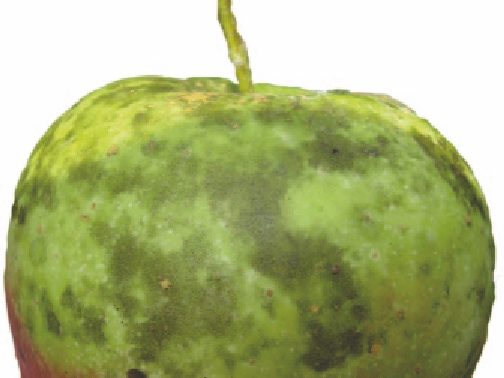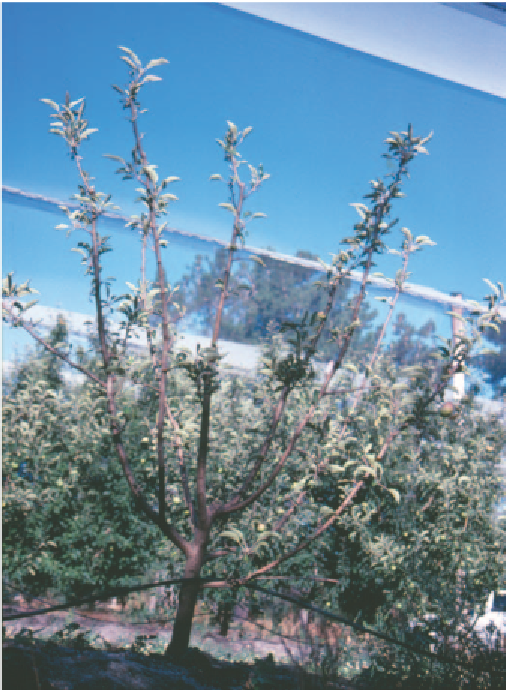Agriculture Reference
In-Depth Information
green manure or brassica mix cover crops to increase
soil biodiversity and reduce the relative populations of
pathogenic soil-borne fungi. See section on apple
replant disorder for further details.
Importance
This is a late summer disease of minor importance in
well-managed conventional orchards. The disease affects
ripening fruit, particularly cultivar Granny Smith, during
humid weather, causing a downgrading of fruit quality.
This disease is much more significant in organic orchards.
When planting apples in old vegetable land or replant
land, drench the base of young trees with the
recommended fungicide at planting, and inject fungicide
into the soil surrounding the tree at midsummer.
•
Management
•
Spray with recommended fungicides.
Inspect trees regularly and, if any show symptoms,
remove the soil from the crown, cut away the diseased
wood and treat the area with the recommended wound
dressing. Drench the soil beneath the crown with the
recommended fungicide. Leave the affected area exposed
for at least 10 weeks. This treatment is effective only
when the disease is detected early.
•
Follow the recommended black spot spray program,
which includes broad-spectrum fungicides.
•
Reduce humidity in the tree canopy by using drip
irrigation, and shaping trees to increase airfl ow.
•
WHITE ROOT ROT (ROSELLINIA
ROOT ROT)
SOOTY BLOTCH OF APPLE
■
Cause
The fungus
Rosellinia necatrix
(previously
Dematophora
necatrix
).
Cause
The fungus
Phyllachora pomigena
(previously
Gloeodes
pomigena
).
Symptoms
Dark grey to dull black blotches of indefinite shape and
variable size develop on fruit. The blotches are superficial
and easily rubbed off. The disease is often associated with
f fly speck, and is more common in organic orchards.
Source of infection and spread
Sooty blotch survives as fungal threads or fruiting bodies
on infected apple twigs. The disease spreads during warm,
wet conditions that favour the growth of the fungus.
Fig 3.33 Sooty blotch appears as superficial black blotches, which
are easily removed by rubbing.
Fig 3.34 A tree affected by white root rot showing poor growth,
premature leaf fall and small leaves.













